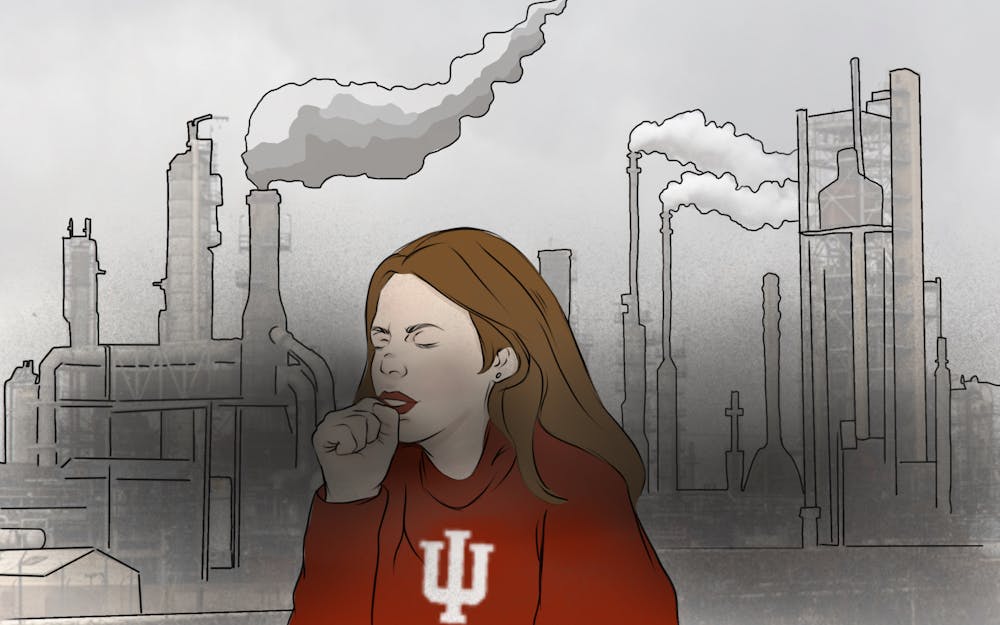One in three Americans experienced a weather disaster this summer.
July was the hottest month on Earth since the National Oceanic and Atmospheric Administration began recording data more than 140 years ago. Upwards of 45,000 wildfires scorched 5.8 million acres across the United States this year, causing places such as Reno, Nevada to experience the worst air quality on record. Hurricane Ida was one of strongest storms to make landfall in the United States, triggering record hourly rainfall in Manhattan and New York City’s first ever flash flood warning.
An estimated 1 billion sea creatures were cooked to death off the coast of the Pacific Northwest following the heat wave. Last year, California wildfires emitted more carbon dioxide than the entire state’s power grid. Hurricane Ida disrupted crude oil production in the Gulf resulting in more than 1,500 reports of oil leaks.
Although scientists agree some devastating impacts of global warming are already irreversible, they also agree we must mitigate their severity by quickly and drastically reducing carbon emissions. Yet, Indiana emits the most toxic pollution per square mile in the United States, according to a U.S. Environmental Protection Agency report.
Instead of adopting the sense of urgency our dying planet warrants, Indiana remains dependent on fossil fuels as the eighth largest greenhouse gas-emitting state in the nation. Indiana has an obligation to its residents, country and the rest of humankind to spearhead the shift toward clean energy.
Coal accounts for 53% of Indiana’s energy generation. Although Indiana has cut its electricity-related coal consumption by almost half since 2010, most of the reduction was offset by increased natural gas consumption.
Human activity, such as burning fossil fuels, has increased the atmospheric carbon dioxide concentration by 48% since the Industrial Revolution. Carbon dioxide works alongside other greenhouse gasses to trap heat in the atmosphere creating a greenhouse effect according to Melissa Denchak of the Natural Resources Defense Council. While the greenhouse effect is natural, emissions have thrown the natural process off balance causing a rapid rise in greenhouse gases and subsequently temperature, Denchak said.
Scientists concluded human-driven climate change created the Northwest heat wave, doubled the Western U.S. forest fire area and increased the likelihood and intensity of major hurricanes like Ida.
The use of fossil fuels also creates more localized consequences for Indiana.
Coal ash is the residue left behind from burning coal and it typically contains harmful chemicals such as arsenic, lead and mercury. Much of the coal ash in Indiana is stored in open-air ash ponds, or surface impoundments. A study by the Hoosier Environmental Council revealed 14 of Indiana’s 15 monitored coal ash sites “have contaminated the groundwater rendering it unfit for use as drinking water.” Indiana has the most ash ponds of any state.
Burning fossil fuels also releases toxins that are detrimental to human health.
The number of Americans who die from illnesses caused by air pollution is roughly equal to the number of people killed in car crashes in the U.S. every year, according to a study published in the Proceedings of the National Academy of Sciences. Researchers from Harvard believe that number is even higher, estimating pollution from fossil fuel emissions caused 18% of deaths in the world in 2018. These findings are particularly worrisome because Indiana ranks first in the nation for toxic pollution per square mile.
Renewable energy investments are critical to lessen Indiana’s dependence on fossil fuels that destroy environmental and human health. Nevertheless, a third of Indiana’s counties severely restrict or ban wind and solar energy projects. Coupled with statewide misinformation campaigns by interest groups, clean energy companies find it increasingly difficult to obtain permits for projects in Indiana.
Experts are calling on the United States and all other countries in the Organization for Economic Co-operation and Development to end coal use in the next eight years. Before Indiana can completely phase out coal and other fossil fuels, the state needs to expand investment in clean energy initiatives. Investing now will minimize job loss when Indiana fully transitions to clean energy and ensure the state has the appropriate infrastructure to support a clean energy grid.
Indiana lawmakers must take initiative and invest in renewable energy immediately if they want an inhabitable state to govern.
Katelyn Balakir (she/her) is a senior studying policy analysis and political science. She is a research coordinator at the Alliance for Citizen Engagement.






